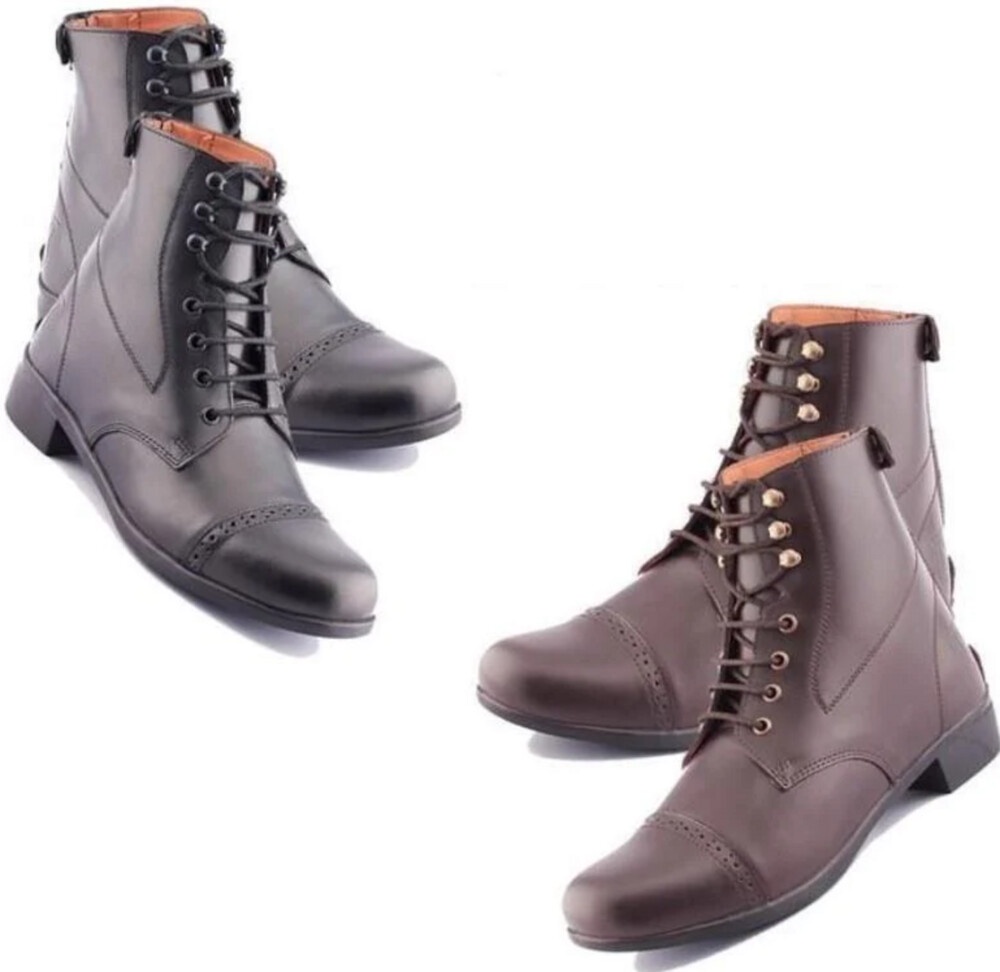For aspiring equestrians, choosing the right footwear is crucial for comfort, safety, and performance. But navigating the world of horse riding boots can be confusing, especially with terms like "paddock boots" and "riding boots" seemingly interchangeable. Fear not, fellow horse lovers! This guide will demystify the differences between these two essential boot types, helping you make an informed decision for your riding needs.
Paddock Boots: Your Versatile, Stable Companions
Paddock boots, also known as ankle boots, are the go-to footwear for casual riding and stable chores. They typically reach just above the ankle, offering flexibility and ease of movement. Here's what makes them stand out:
- Comfort and practicality: Paddock boots prioritize comfort with supportive soles, breathable materials, and secure closures. They're ideal for mucking stalls, grooming your horse, or enjoying leisurely rides.
- Affordability: Compared to tall riding boots, paddock boots are generally more budget-friendly, making them a great option for beginners or occasional riders.
- Versatility: Many paddock boots are waterproof and durable, making them suitable for various weather conditions and activities beyond the stable.
Popular Paddock Boot Styles:
- Lace-up: a classic style offering adjustability and a secure fit.
- Zip-up: a convenient option for quick on-and-off, especially popular in children's boots.
- Pull-on: easy to wear and comfortable for everyday stable work.
Who Should Wear Paddock Boots?
- Beginners and casual riders: Paddock boots provide comfort and affordability for learning the ropes.
- Children: Smaller sizes and easier closures make them ideal for young equestrians.
- Stable hands: durable and practical for daily stable chores.
- Trail riders: Opt for waterproof styles for comfortable off-road adventures.
Riding Boots: For When Performance Matters
Riding boots, also known as tall boots, are designed for serious riding disciplines where leg support, stability, and a close fit are crucial. Here's what defines them:
- Support and stability: Riding boots reach above the knee, offering crucial support for your calf and ankle, especially important for jumping or dressage.
- Performance-driven design: Materials and construction are tailored to specific disciplines, like flexibility for jumping or stiffness for dressage.
- Formal look: Tall boots are traditionally worn in competitions and dressage, adhering to specific elegance and style standards.
Popular Riding Boot Styles:
- Field boots are a versatile option for jumping and other disciplines, offering a balance of support and flexibility.
- Dressage boots: stiffer and taller for precise leg aids and a formal look in dressage competitions.
- Hunter boots are designed for show jumping with a wider calf fit and traditional styling.
Who should wear riding boots?
- Competition riders: essential for adhering to dress code and performance requirements in various disciplines.
- Advanced riders: Offer the support and stability needed for higher-level riding skills.
- Dressage riders: The stiffer design facilitates precise leg aids and a formal appearance.
Making the Right Choice: Paddock Boots vs. Riding Boots
Ultimately, the best choice depends on your riding goals, frequency, and personal preferences.
- For casual riding, stable work, or budget-conscious options, paddock boots are a great choice.
- For competitive riding, dressage, or advanced disciplines requiring support and a formal look, riding boots are essential.
Additional Considerations:
- Discipline: Different disciplines have specific boot requirements. Consult a riding instructor or experienced equestrian for guidance.
- Fit: Both paddocks and riding boots should fit snugly without restricting movement.
- Material: Leather offers durability and breathability, while synthetic materials are often more affordable and waterproof.
- Climate: Choose waterproof styles for wet conditions or breathable materials for warmer climates.
Remember: Your riding boots are an investment in your comfort, safety, and performance. Choose wisely and enjoy your equestrian journey!
Bonus:
- Children's horse riding boots: Consider features like easy closures, growth room, and fun colours for young riders.
- Men's and women's horse riding boots: styles cater to both genders, ensuring a perfect fit and comfortable experience.
- Mountain horse riding boots: Look for rugged designs with ankle support and traction for off-road adventures.
With this guide, you're well-equipped to navigate the world of horse riding boots and choose the perfect pair for your needs.


No comments yet